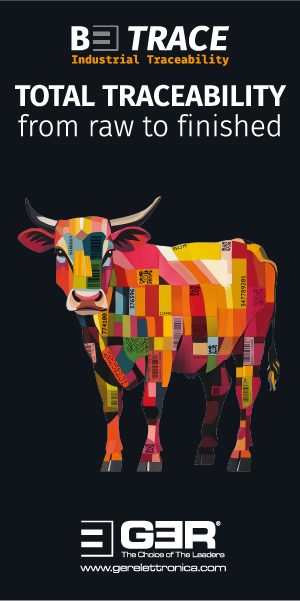Market Intelligence — 14.06.22
Macroeconomics
The war, inflation and the big question of what will happen to supply chains and consumption in China are still the hot topics. The facts are now showing and can no longer be denied.
Let’s start with the war. Some time ago, the hope for diplomacy and talks was still widespread. In the meantime, it has become clear that the unimaginable is occurring and the conflict can probably only be fought out on the battlefield. This actually leaves only the hope for a miracle of some kind, or a development that is not discernible today.
The situation in other regions of the world also continues to worry us. The focus is particularly on the still unstable and unclear situation in and around Taiwan and North Korea. Imperial designs now threaten security and prosperity in many regions of the world, and they are unpredictable. The current reappraisal of the events at the end of the Trump era in the US also make it clear how quickly such developments are possible everywhere. The manipulation of the masses by a few (also called propaganda) has gained even more power through modern technology and the hope that the internet would create a greater balance and equilibrium is not fulfilled.
Today’s threat from politics is now further compounded by the economy. Inflation and the resulting sharp rise in the cost of living are major problems. They are quickly making the lower-income groups in particular very receptive to the demagogues’ easy solutions and blame. In addition to the local social tensions, the world is increasingly breaking up into political blocs. First of all, however, there is the high risk for local stability that income will no longer be sufficient for many to cover their basic needs. This risk increases with each passing day, as the prices for basic foodstuffs and energy fail to come back down. In this case, the academic calculation of inflation does not help, and certainly not the disregard of so-called core inflation. For the poorer population on earth, it is precisely this, ignoring energy and food prices, that plays the decisive role in their lives.
First of all, the so-called experts were once again ‘surprised’ by the latest statistical data. In the US, inflation rose to values of almost 9% per annum and in Europe we continue to have values well above 7%, with no end in sight. In many countries, discussions about the corresponding wage increases are already beginning, which makes the greatest fear of economists, namely the emergence of the so-called wage-price spiral, a reality. At its last meeting, the European Central Bank sent out the first signals regarding upcoming interest rate hikes. The policy of sitting on the sidelines hearing nothing, seeing nothing and saying nothing is, thus, coming to an end. The big problem remains, however, that late action only exacerbates the problem and does not solve it in the end.
Even though the forecasts of the major institutes are hardly very reliable and they always just chase reality anyway, the World Bank last week significantly downgraded its forecast for global economic growth to 2.9% for this year.
The high hopes for easing restrictions in China were only partially fulfilled, if at all. Although strict lockdowns were eased somewhat in Shanghai and companies were able to resume operations under certain tight conditions, this ended up being a very short-lived pleasure, as both Shanghai and Beijing saw new outbreaks followed by renewed restrictions. The psychological effect of this on people has come to play a major role. From our many contacts in China, it is easy to see how people are suffering more and more from the situation and, above all, feel no hope at all of a return to normality because of the strict zero-covid policy. As strict censorship also suppresses and punishes any kind of criticism and open dialogue, it is extremely difficult for people to voice their displeasure, even to international friends and acquaintances, so that frustrations and tensions build up. Somehow, even as an outsider, you feel this brutal vicious circle that people have been in for months. In China, too, there are thus not inconsiderable risks of developing social tensions.
The stock markets, which have been able to recover again and again from minor and major setbacks in recent months, are now facing economic risks as well as political ones. Rising interest rates are now poison for the economy and the risk of a global recession continues to increase. The stock markets have thus once again gone into reverse gear and it no longer seems very likely that this trend will be reversed in the near future.
Energy prices remain high without any significant relief, despite rather negative expectations for the global economy. The price of a barrel of oil remains fixed in the region of $120.
Gold continues to be seen by many as one of the possible winners of the crisis, but so far no serious increasing movements can be seen, thus maintaining the price range of $1800-$1900 over the last two weeks.
Leather Pipeline
We readily admit that we have now exhausted the possible scenarios for the future with the facts at our disposal and we do not really have any additional information at the moment to change our basic assessment for the coming months.
We are in an extremely difficult phase for the leather industry, both cyclically (because this is the quiet season) and economically. If things go wrong, we could be facing fundamental crisis. Hope dies last, but without hard work, good ideas and initiatives, as well as a lot of commitment, it will be very difficult to push open the doors on the road to success again.
We do not want to be misunderstood. This is about the general development of the leather industry and not about the success or failure of individuals. Leather will always be produced and individuals will always have economic success with it. What we are looking at is whether the raw material that is available can continue to be made available to people as finished leather, with all its benefits. The focus in all the discussions that are taking place in the leather industry worldwide today is too concentrated on cattle hides, leaving aside all the other hides and skins available for making leather. The fact is that many sheepskins and lambskins, as well as other animal skins, have not been used for years because there is no longer enough demand for using them in finished products.
The main blame here clearly lies with the retailers and finished product brands for whom it is too complicated for their production and marketing set-ups to deal with leather. The problems are well known; a raw material with individual characteristics and natural features is only suitable to a limited extent in industrial production, in which predictable, controllable costs and uniformity are so important. The right of return that consumers have today, which protects them from defective products and allows them to return goods for almost any reason, is also toxic for a material like leather. If this problem is not resolved, the difficulty of defending leather as a material in mass production will increase. All the other arguments will be of little help, because the hurdle that has to be overcome will at some point simply be too high for anyone to dare to try any further. This means there is an urgent need to educate consumers about leather.
Until now, steadily growing consumption, especially in China and emerging markets, has protected us from the problem spilling over into cattle hides as well. Every crisis in the past could always be absorbed by steady, global growth and rising consumption. Raw material prices fell when demand fell, processing costs remained stable or fell, productivity rose and energy and production materials were also available in sufficient quantities and at acceptable prices. All this, combined with growing consumption, was always enough to make sure large volumes of cattle hides were made into leather products.
If you look back at what has happened in the market in the last two weeks, you can see that participants are finding it very difficult to agree on how to assess the current situation. Looking at the bovine market, there is a massive clash of ideas. The global reference market, US hides, has fallen by up to 40% in recent months and has repeatedly defended its global competitiveness by reducing prices. This was relatively easy for the large corporations, despite all the logistical problems, because the profit margins for beef were so large that revenue from by-products were not so much in focus. In the meantime, however, the revenue situation has returned to normal and there are now attempts to see if price increases can be implemented.
This is meeting with massive resistance from buyers who, for their part, cannot see any reason why they should pay more for raw hides, either because of poor leather demand for the second half of the year or because of increased production costs. Many other markets around the world are still struggling to adjust their prices to the real market conditions and summer is known to be an extremely difficult time for this.
Thus, the last two weeks have actually seen more of a state of paralysis develop again and, overall, little more than the absolutely necessary is being negotiated between suppliers and buyers at the moment.
The easing of restrictions in China initially triggered hopes that the industry there would have to replenish its stocks of raw materials. The now significantly lower commodity prices could also have triggered speculative buying. However, there is not much evidence of either on the market at the moment. The big companies in all locations are still present in the hide market, ensuring secure raw material stocks and buying into the falling prices in the certainty that this cannot be harmful in the long run. Since they are the only really active buyers now, they are also rewarding themselves with substantial discounts to the official market prices. No one can quantify exactly the how much raw material these producers are snapping up, but we would guess that it is somewhere between 60% and 80% of the world production of cattle hides.
The remaining hides should then be left to small and medium-sized enterprises so that the market is in balance. But there is a lack of momentum among those smaller producers at the moment and also a lack of courage to bet now on the end of falling hide prices.
At the lower end of the quality and price range, the market for collagen continues to help, preventing hides from going to destruction.
We have nothing new to add to the comments in our last issue regarding the market for splits. Demand for splits, for the leather industry and collagen production, is still strong enough to keep the split market stable at the current high prices. No major change is expected here in the next few weeks and the next decisive turning point will probably come in the middle of the summer when, on the one hand, last season’s split leather production will come to an end and, on the other hand, the price development on the cowhide market will become apparent. This combination will be decisive for further developments in the split market.
For sheepskin, the situation has also changed very little. For raw materials for nappa leather production, prices remain extremely low and very rarely cover collection and preservation costs. The current problems regarding foot-and-mouth disease in South Africa and the resulting burden of exports to China opened up access to high-quality goods at correspondingly attractive prices for other markets. Niche and special articles (such as fine, dense wool, high-quality grain and so on) continue to find their markets at attractive prices and confirm that there are still successful uses for the material. However, as always, we have the same theme: it takes brand recognition and good prices to be able to produce this material successfully. ‘No name’ is simply not enough to reach satisfactory levels of price and volumes.
We do not expect a decisive turning point in the next few weeks. In our estimation, buyers in Asia in particular will have to decide at the end of June or the beginning of July what their expectations and hopes are for the second half of the year in terms of their production and sales of leather.
Transport times from the US and from Europe have increased by at least 20 days. This must also be taken into account if the supply chain is not to be broken. Waiting too long is not an option. As discussed above, the key to market development lies not so much in standardised mass production, but rather in the remaining capacity of small and medium-sized enterprises around the globe. If they have a positive expectation of their business for the second half of the year, then they will need to have sufficient raw material supply. This would then also lead to the commodity markets stabilising and possibly even recovering to some extent.
However, the optimists should control their enthusiasm. The increased production costs and logistics problems will be with us for quite some time. Without a massive increase in demand, it will not be possible to implement the necessary price increases for leather in the market. The risk that we will also lose production capacity for leather because companies are forced or voluntarily withdraw from production remains real too.












